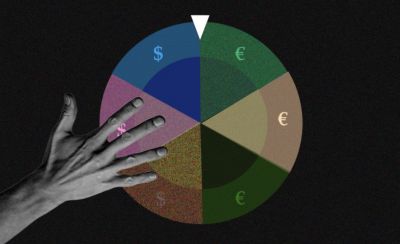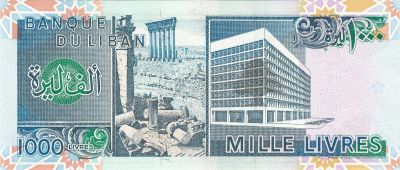
Since the start of the crisis late 2019, Lebanon has been juggling between at least three different exchange rates. (Credit: João Sousa/L'Orient Today)
BEIRUT — Mohammad Hammoud begins his work day at 8 a.m. with a familiar ritual — scrolling through his phone. He diligently scans various exchange rate groups on WhatsApp and Telegram, keeping a close eye on fluctuations.
In the bustling streets of Beirut, an informal network of currency exchange agents plays a crucial role in Lebanon’s volatile economy. Hammoud, a 30-year-old former chef, is one of them.
Since the start of the crisis late 2019, Lebanon has been juggling between at least three different exchange rates: the government’s official devalued rate (down from its 1997 peg of LL1,500 to the dollar, to LL15,000 today), the parallel market rate (which stands at about LL93,000 to the dollar as of Tuesday) and the Sayrafa rate, designed by the central bank to control foreign exchange transactions and stabilize fluctuations on the parallel market.
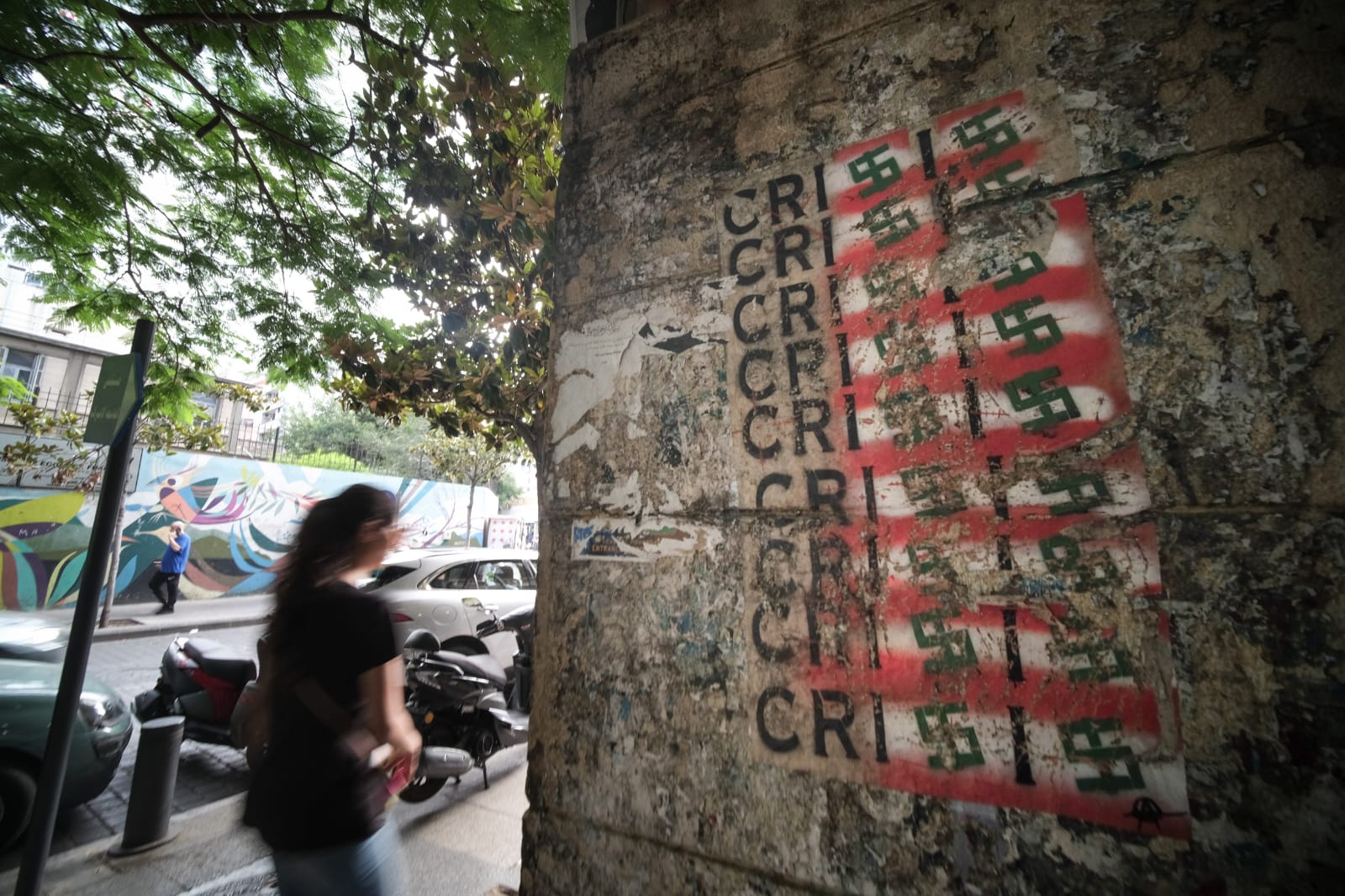 A graffiti entitled 'Cri$i$' by street artist Jonas, in Hamra, Beirut, June 8, 2022. (Credit: João Sousa/L'Orient Today)
A graffiti entitled 'Cri$i$' by street artist Jonas, in Hamra, Beirut, June 8, 2022. (Credit: João Sousa/L'Orient Today)
And though the Sayrafa rate is set to be phased out in the coming months, it’s been used over the course of the economic crisis in lira-dollar conversion operations that individuals and businesses can perform through their banks.
Still, for the vast majority of people doing everyday transactions, the parallel market rate reigns supreme. That's where Hammoud comes in.
WhatsApp economy
With the lira collapse and the rise of the parallel market rate, Lebanese authorities made efforts to intervene by cracking down on exchange shops that didn’t comply with the rates established by the central bank.
As a result, instant messaging groups emerged as platforms for communication, information sharing, finding dollar sellers and buyers and monitoring market dynamics.
Hammoud explains that there are two types of groups: the “weak ones,” with members having limited financial resources, which would result in fewer buying and selling activities; and the “big groups,” which consist of influential individuals, including central bank agents and other members who engage in significant buying and selling transactions — regular exchanges of no less than $5,000.
He said he helped organize some of these groups, exemplifying one with 700 members and another with 730 members, most of whom he is acquainted with.
A market driven by speculation
For Hammoud and his fellow money changers, the Sayrafa rate’s fluctuations (or lack thereof), despite it being slow-paced compared to the parallel market rate, directly correlates with their earning potential.
Sayrafa's fluctuations are contingent on the daily trading volume the central bank allows between banks and exchange institutions/individuals on the platform.
Although this platform has been set up in several stages since mid-June 2020, with the aim of making a foreign exchange market, its role and mechanisms remain poorly understood to this day.
BDL, in an attempt to inject fresh dollars into the market and hence mitigate dramatic fluctuations in the lira's parallel market value, allows depositors to withdraw US dollars from their Lebanese lira accounts at the central bank's Sayrafa exchange rate a few days after depositing their money.
This rate is generally lower than the market rate, allowing customers to obtain more dollars for their Lebanese lira than if they were to exchange them at the parallel market rate.
However, Hammoud pointed out that in order to make as little as $500 in profit, “my clients usually exchange around $11,000 [at the black market rate], the equivalent of around LL1 billion, then deposit the lira in their bank account, and exchange it at Sayrafa rate.”
“But if Sayrafa is halted in the middle of this operation, they lose half the money so I don’t think it’s worth it,” he also pointed out.
According to the World Bank though, economic agents — including banks and independent exchangers — who traded between the discounted rate on the Sayrafa platform and the parallel market collectively nearly $2.5 billion in arbitrage profits.
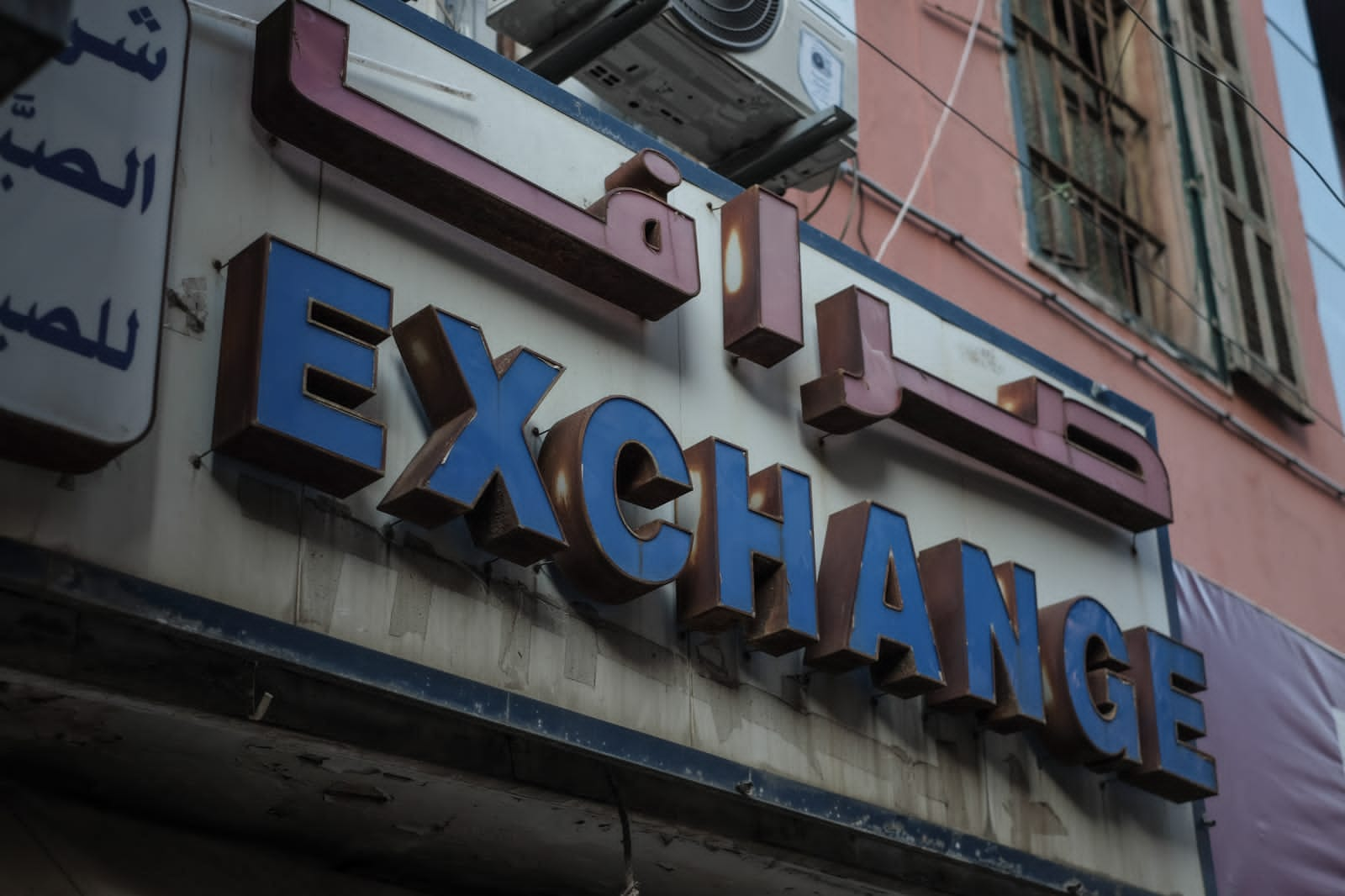 An exchange office sign in Hamra, Beirut, Nov. 20, 2022. (Credit: João Sousa/L'Orient Today)
An exchange office sign in Hamra, Beirut, Nov. 20, 2022. (Credit: João Sousa/L'Orient Today)
Hammoud further explained that when Sayrafa is stable, the market remains calm, resulting in less action and fewer opportunities for him to generate profit from currency exchange operations.
When Sayrafa rate increases, it creates a surge in demand for his services, allowing him to capitalize on the situation and earn substantial profits.
“It is very similar to the stock market — both processes involve taking advantage of price fluctuations to generate profits,” Hammoud said. “For example, if I speculate that the market price will rise, I buy more dollars, and if I expect a price drop, I sell more dollars.”
A market driven by fear
Fear, emanating from negative news and uncertainty in Lebanon, such as a political impasse, a bank strike, or an explosion, can directly influence the behaviors of people engaging in the currency exchange market, Hammoud says.
If the Sayrafa rate is increased, for instance, the lira-dollar parallel market rate will instantly surge.
Fear could lead to financial herd behavior where lira holders engage in panic-buying which could spiral the lira’s volatility.
“Some people have some of their money in lira, and they get spooked when they realize the lira is losing value so they immediately want to buy dollars with their liras,” Hammoud says.
“They will buy at whatever rate, pushing the demand for dollars up, hence further increasing the [lira-dollar exchange] rate.”
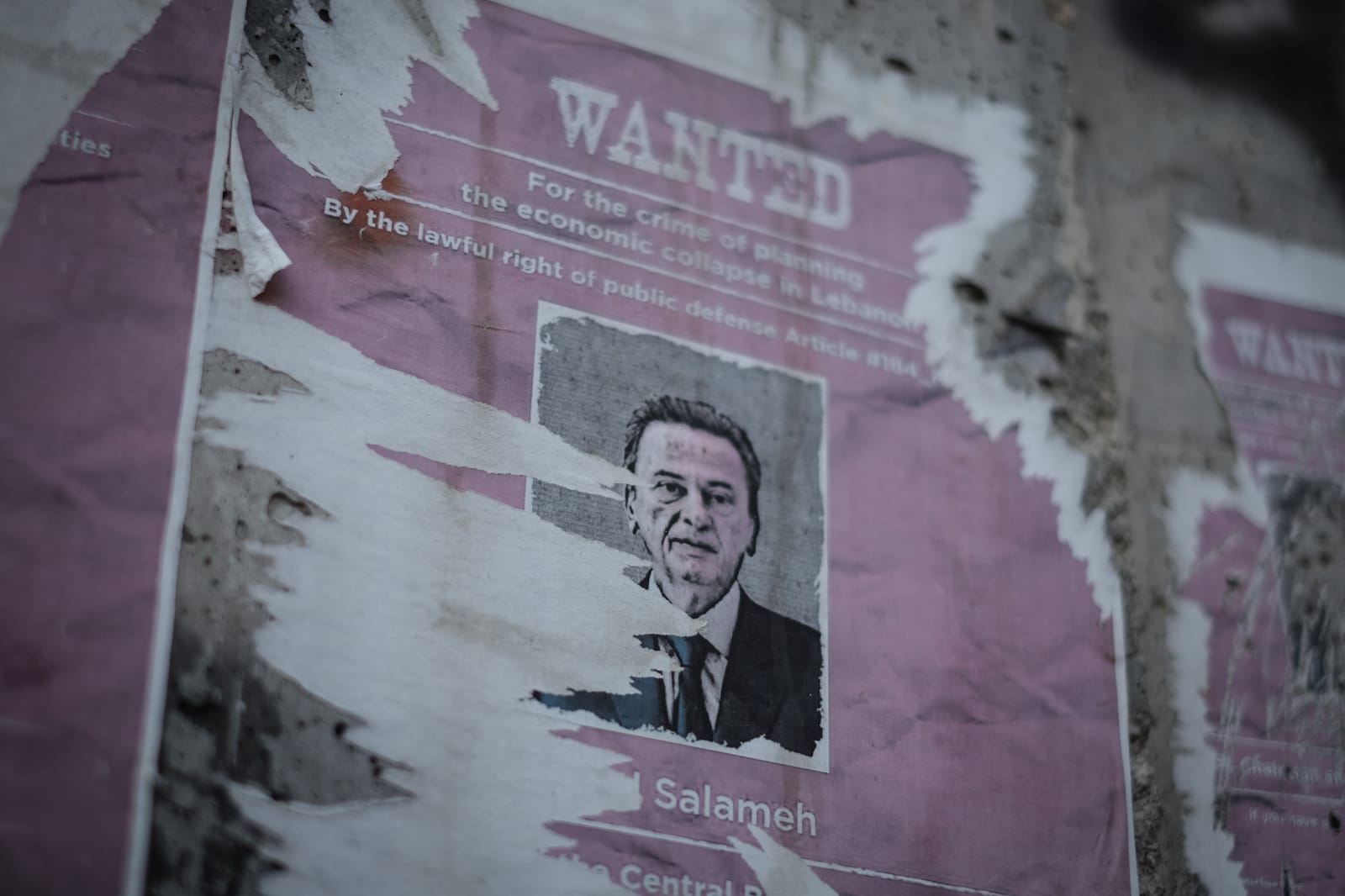 A poster of Banque du Liban Governor Riad Salameh on a street in Beirut. (Credit: João Sousa/L'Orient Today)
A poster of Banque du Liban Governor Riad Salameh on a street in Beirut. (Credit: João Sousa/L'Orient Today)
On the other hand, Hammoud says the lira-dollar rate decreases when people sell their dollars.
“It creates a big supply and a low demand,” he explains. “The rate will decrease because many people start erratically wanting to sell dollars while money changers hold off buying at first, so those people start settling for a lower rate.”
It starts with one person on the instant messaging groups, “who offers to sell his dollars at a rate lower than the black market rate. And so the rate decreases because no one will accept to buy at a higher rate from that moment on.”
Who is the main client base?
Understanding that convenience to his clients is key and knowing the city like the back of his hand, Hammoud sets out on his motorbike, carrying a bag filled with stacks of cash, to reach his clients.
His client base consists of people selling him dollars to make a profit. These clients, ranging from small-scale investors to high-net-worth individuals, regularly exchange amounts ranging from $3,000 to as high as $50,000.
“It's a regular deal,” Hammoud says.
He has cultivated a level of trust with his clientele, establishing long-term relationships based on mutual benefit and reliable service.
Describing himself as a "wholesale dealer in the currency exchange market," Hammoud not only trades for his family’s exchange shop but also supplies currency to retailers such as OMT and Western Union, as well as other exchange shops across the city.
In addition, “the central bank buys dollars from the market, and I’m one of the people who sell the central bank those dollars and deal with the employees who personally hand in the money to the bank,” Hammoud says.
For instance, money exchange shops buy dollars from Hammoud’s customers and he then buys the dollars from those shops and sells them to the “big guys,” referring to the individuals working with BDL.
Majd al-Masri, head of the Syndicate of Money Changers, has previously told L’Orient Today that, in order to achieve a state of economic equilibrium, the central bank carefully determines the appropriate quantities of dollars to be pumped into the market.
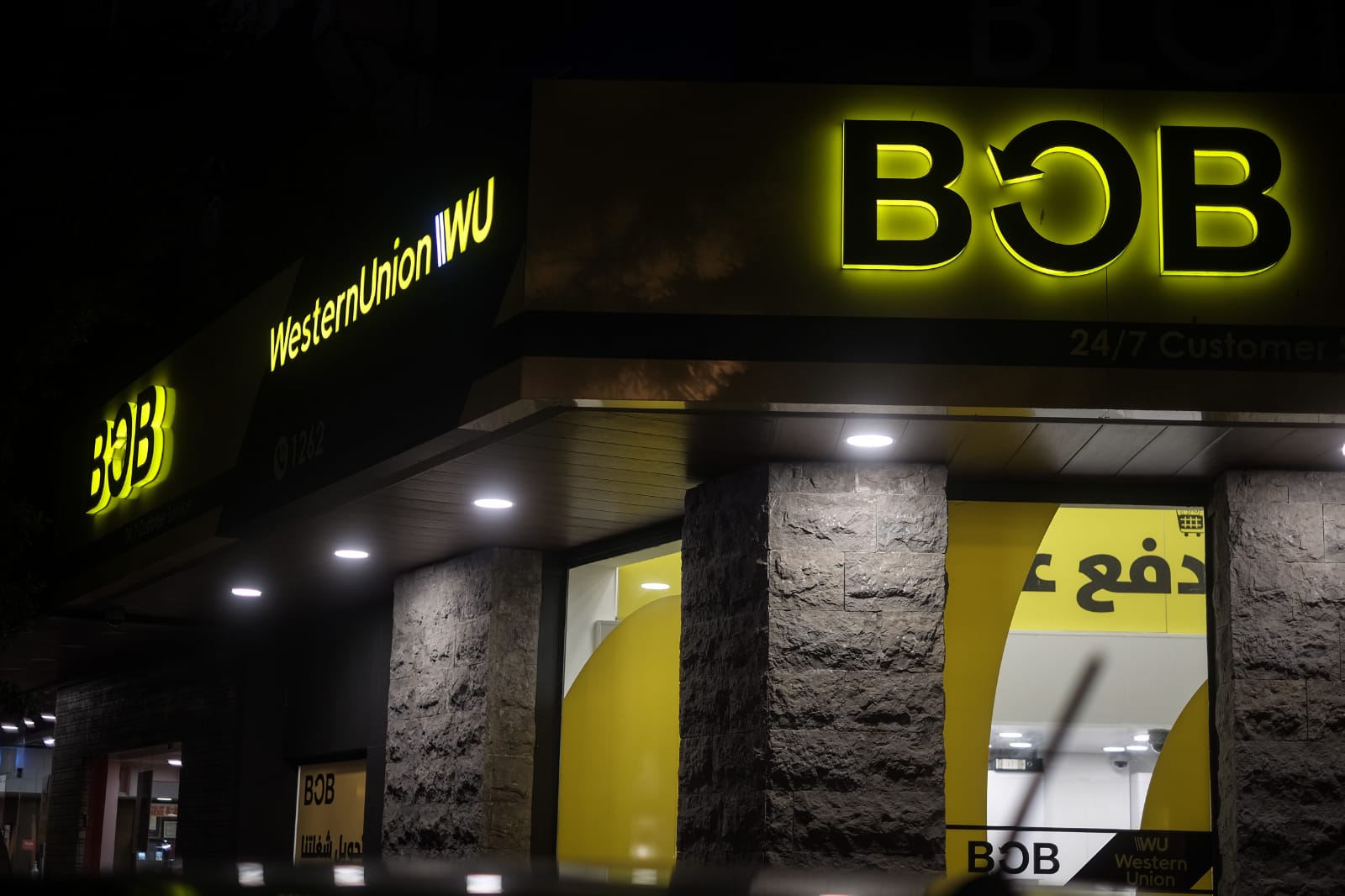 An exchange office in Sassine Square, Beirut, Nov. 18, 2022. (Credit: João Sousa/L'Orient Today)
An exchange office in Sassine Square, Beirut, Nov. 18, 2022. (Credit: João Sousa/L'Orient Today)
How much money do money changers make?
Hammoud says the dynamic nature of Lebanon's market makes it challenging to have fixed earnings. His monthly income can fluctuate significantly, ranging from $2,000 to $15,000, and he occasionally experiences daily profits of $1,000.
“Among the ways I make profit is when I buy [dollars] at a lower price and sell it at a higher price,” Hammoud explains.
Before the crisis began in 2019, Hammoud worked as a chef in one of Beirut’s high-end restaurants. But transitioning to a money changer brought Hammoud newfound freedom and significantly increased income compared to his previous $2,500 monthly salary, he says.
He claims he can now occasionally make the same amount in just two days, depending on market conditions.
“My quality of life has changed,” Hammoud says. But working as a currency exchanger does not come without its risks.
“It’s very easy to lose money,” Hammoud says. “Not long ago, I lost $6,000 in a day, for example, but it’s cool — I’ve lost even more before.”
“The important thing is that you earn more [than what you lose].”
Hammoud gave the example of when a client reached out to him once to sell him $3,000.
“We agreed on a rate, which was at the time LL122,000 per dollar or so, and we made a deal over the phone,” Hammoud says. “A deal is a deal no matter what changes happen to the market by the time I arrive to deliver the money.”
“The market went crazy [after the deal was made], driving the rate up by LL10,000 before I arrived,” Hammoud adds.
The client, in effect, made a profit of LL30 million, Hammoud concludes. “This has happened multiple times before, it’s part of the process.”
Not only do money exchangers face financial risks in their trading but also risks to their physical safety.
Hammoud operates primarily in the areas of Furn al-Shubbek, Achrafieh and Badaro. He says he avoids areas like the southern suburbs of Beirut, at all costs, for safety reasons.
“Exchangers are often subject to theft and murder there,” he adds. “It’s not worth it.”
In May 2022, Sergeant Abbas Qais, an army official, was conducting a money exchange transaction in Kafaat in Beirut’s southern suburbs when unknown gunmen fatally shot him. The motive was reportedly theft.
In another incident in April 2020, a money exchanger operating in Ghobeiry, in Beirut’s southern suburbs, was stabbed in his waist with a knife while gunshots were heard.
The money-exchanging business in Lebanon can be an enticing venture, offering the potential for high profits, Hammoud says. Still, he warns against “gambling” with their income on each exchange deal.
“Some exchangers gamble in the black market, which means that, for example, if the [lira-dollar exchange] rate increases, they go and sell all their dollars then count on the rate decreasing to buy dollars again.”
“But it might not.”
This article has been updated to clarify that all economic actors, including banks, earned a collective nearly $2.5 billion in arbitrage profits by trading between the discounted Sayrafa rate and the parallel market. This number does not reflect the profits of only independent currency exchangers.
